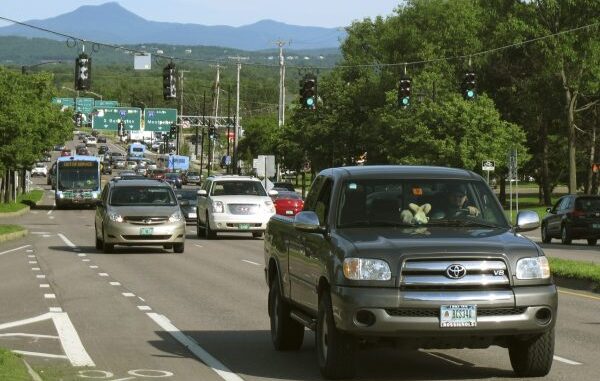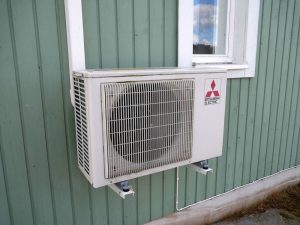
Vermont is pioneering two novel approaches to try to maximize the benefits from electric vehicle rebate programs.
Electric vehicles have so far done little to lower gasoline consumption, with one analysis estimating that 2.25 million EVs on the road in 2021 only reduced U.S. gas fuel sales by about half a percent. That’s in part because many early adopters have been either infrequent drivers with short commutes or owners of vehicles that were already relatively fuel efficient.
A pair of programs in Vermont are attempting to change that dynamic by targeting incentives to long-distance commuters and drivers of older, less efficient vehicles.
Legislation approved in June at the request of the Burlington Electric Department authorizes electricity providers to incentivize high-consumption fuel users to switch to battery electric vehicles. The law defines high consumption as more than 1,000 gallons of gasoline or diesel annually.
According to Darren Springer, Burlington Electric’s general manager, the company decided to pursue such a program — ostensibly the first in the country — after reviewing research from Coltura, a nonprofit that advocates for accelerating the transition from gasoline to cleaner fuels.
Coltura has found that 10% of U.S. drivers consume about a third of the gasoline used by light-duty vehicles.
“We’re slowly getting people to understand that you can more cost-effectively reduce emissions from the transportation sector if your resources prioritize the highest mileage drivers,” said Rob Sargent, Coltura’s policy director.
And there is an added equity bonus, Sargent said, because a majority of these superusers (56%) are also below the median household income. Many of them are commuters forced to drive long distances because they can’t afford to live close to where they work, and end up spending a lot of their limited income on gas.
Focusing electric vehicle incentives on maximizing gasoline displacement “aligns the climate imperative with the very appropriate need to focus on equity and access,” Sargent said.
Because Vermont requires annual vehicle inspections, proving how far you drive in a year is a matter of comparing odometer readings on those inspection reports from one year to the next.
Springer said the company is in the process of figuring out how to structure the program, which, with approval from utility regulators, will likely be offered in January to Burlington’s 21,000 customers.
“We’re thinking about what level of miles traveled per year would qualify someone for this program,” he said. “Burlington drivers are driving less vehicle miles annually than the state as a whole, because the city is a relatively compact urban area compared to many other parts of the state.”
The other challenge is figuring out what incentive level will drive adoption, he said. The company will offer an enhanced EV incentive for superusers beyond their existing programs’ current range of $1,300 to $3,000, depending upon the buyer’s income level and the type of vehicle being purchased.
Meanwhile, a state program called Replace Your Ride, launched last September, is offering income-eligible drivers a $3,000 incentive to scrap a gas-powered vehicle that is at least 10 years old and replace it with a new or used electric or plug-in hybrid vehicle.
At the time of trade-in, the owner must submit a form attesting that the car is being disposed of by one of the state’s approved scrapping partners or a company certifying it will be auctioned for parts.
“The quicker we’re taking vehicles off the road and replacing them with cleaner transportation options, the better off we are for progress toward our climate goals,” said Patrick Murphy, sustainability and innovations projects manager for the Vermont Agency of Transportation.
Setting the right incentive level to convince people to trade in their old vehicles has been a challenge for the program. Between last September and the end of June, the program only removed 32 old cars from the roads, Murphy said.
Sixteen of those rebates went toward the purchase of used electric or plug-in vehicles, and 13 were for new vehicles. (The average age of the trade-ins was 15 years.) The remaining three rebates were for a third option: a pre-paid mobility card for getting around by other means, such as public transit or car sharing.
“We did not get the interest that we had hoped for, but it was really driven by market factors that came into play after the program had been enacted,” Murphy said. “The used vehicle supply became very tight, especially for those vehicles that got very good mileage or for plug-ins. Those being traded in were still able to get $3,500 or $4,000 on the market. In ordinary times they wouldn’t have been worth that much.”
In an effort to boost participation, the state is upping the incentive from $3,000 to $5,000, effective July 27. That incentive can be stacked on top of other state incentives, potentially cutting the cost of a new or used vehicle by as much as $10,000, Murphy said.
Beyond cost, a number of other factors complicate the decision to go electric in Vermont, including the availability of charging infrastructure in the state’s many rural areas. Still, Murphy said, “we’ll see what additional interest we might get. We are starting to see some saner used vehicle prices at this point.”



